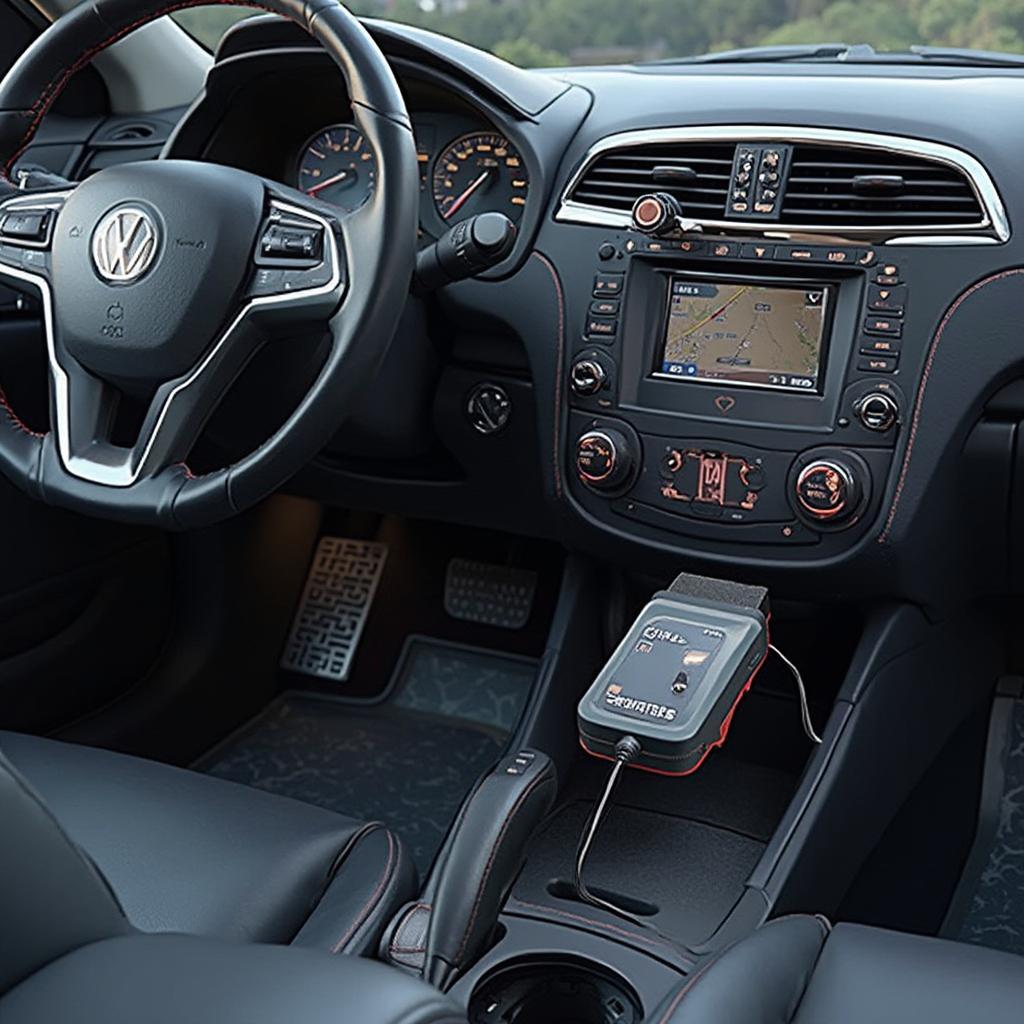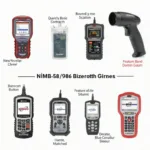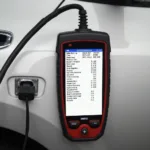Can you drive with your OBD2 scanner plugged in? This is a common question among car owners, and the answer is generally yes. This article will delve into the specifics of driving with an OBD2 scanner connected, addressing common concerns and providing valuable insights.
Driving with an OBD2 scanner plugged in is typically safe and won’t harm your vehicle in most cases. The primary function of the OBD2 port is to provide access to your vehicle’s diagnostic data. A scanner simply reads this data, rarely interfering with the car’s systems. Think of it like reading a book – you gain knowledge from the book without changing its content. Soon after introducing yourself to the world of OBD2 scanners, you may wonder about leaving the device plugged in. Check out our article on can i leave obd2 plugged in for a comprehensive discussion on this topic.
Understanding the OBD2 Port and Scanners
The OBD2 port, typically located under the dashboard on the driver’s side, serves as a gateway to your car’s computer. It allows mechanics and car owners to access real-time data about the engine, emissions, and other crucial systems. OBD2 scanners, whether basic code readers or advanced diagnostic tools, interpret this data, providing insights into potential issues.
Is it Safe to Drive with an OBD2 Scanner Plugged In?
Yes, in most cases, driving with an OBD2 scanner plugged in is safe. However, there are a few potential scenarios where it might not be ideal. For instance, if your scanner has a bulky design or loose wiring, it could interfere with the pedals or obstruct your view. Similarly, leaving a scanner plugged in for extended periods, especially in extreme temperatures, could theoretically drain your car’s battery, albeit minimally.
 Driving with OBD2 Scanner Plugged In
Driving with OBD2 Scanner Plugged In
Long-Term Effects of Driving with OBD2 Plugged In
While short-term use poses minimal risk, some drivers wonder about the long-term effects. Generally, leaving an OBD2 scanner plugged in for extended periods shouldn’t cause any significant issues, provided it’s a quality device. However, cheap or poorly designed scanners might draw more power than necessary, potentially leading to a slow battery drain over time. If you’re interested in reliable and high-performing OBD2 scanners, especially wireless options, take a look at our recommendations for the best obd2 wifi dongle.
Will it Drain My Battery?
A common concern is battery drain. While a properly functioning OBD2 scanner shouldn’t significantly drain your battery, it’s always a good practice to unplug it when not in use. This minimizes any potential drain and also protects the scanner from damage.
Best Practices for Driving with OBD2 Plugged In
If you choose to drive with an OBD2 scanner plugged in, follow these best practices:
- Secure the Scanner: Ensure the scanner is securely mounted and doesn’t obstruct your view or interfere with the pedals.
- Use a Quality Scanner: Invest in a reputable brand to minimize the risk of power drain or malfunction.
- Unplug When Not in Use: When you’re not actively monitoring data, unplug the scanner to avoid any potential battery drain.
- Monitor Battery Health: Regularly check your car’s battery health to ensure it’s functioning optimally. You can find helpful information about OBD2 connectors for specific car models, such as the 2018 honda cr v obd2 port, on our website.
Can I Leave it Plugged in Overnight?
While it’s generally safe to leave an OBD2 scanner plugged in overnight, it’s best to unplug it as a precautionary measure.
“Always prioritize safety and use common sense when driving with any device plugged into your vehicle,” advises John Smith, Senior Automotive Technician at Smith Automotive Solutions.
Conclusion
Can you drive with obd2 plugged in? Yes, in most scenarios. While generally safe, it’s crucial to use a quality scanner, secure it properly, and unplug it when not in use. By following these guidelines, you can leverage the benefits of an OBD2 scanner without compromising safety or vehicle performance. Consider exploring our article on navdy obd2 for more insights into using OBD2 technology. For waylen 360 obd2 connector specific information, check out our dedicated guide.
FAQ
- Is it legal to drive with an OBD2 scanner plugged in? Yes, in most jurisdictions.
- Can any OBD2 scanner be used while driving? Ideally, use a compact, securely mounted scanner designed for live data monitoring.
- Will the scanner interfere with other car systems? A properly functioning scanner shouldn’t interfere.
- Can leaving the scanner plugged in damage my car? Unlikely, but using a low-quality scanner or leaving it plugged in for extended periods in extreme temperatures might pose a small risk.
- How can I prevent my OBD2 scanner from draining my car battery? Unplug the scanner when not in use.
- What should I do if my scanner interferes with the pedals? Find a more suitable mounting location or use a different scanner.
- Where can I find reliable OBD2 scanners? Reputable auto parts stores and online retailers.
Common Scenarios
- Using OBD2 for Real-time Monitoring: Driving with the scanner plugged in is useful for monitoring live data, such as engine performance and fuel economy.
- Troubleshooting Intermittent Issues: If you’re experiencing an intermittent problem, driving with the scanner connected can help pinpoint the cause.
Further Exploration
For additional information on OBD2 scanners and related topics, explore these resources on our website:
- OBD2 Scanner Basics
- Advanced OBD2 Diagnostics
- Troubleshooting Car Problems with OBD2
Need further assistance? Contact us via WhatsApp: +1(641)206-8880, Email: [email protected]. Our customer service team is available 24/7.

